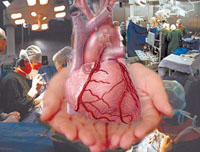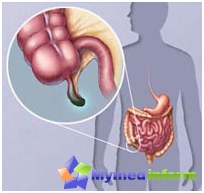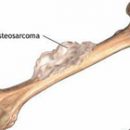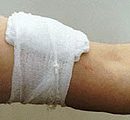«You are shown hysterectomy» - These words most often shock a woman. What are the consequences of the removal of the uterus? Whether menstruation persists, whether Klimaks will come, what changes will occur in intimate life and in general, what will be sex after the uterus removal?
Content
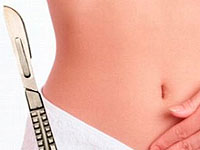 Hysterectomy — Surgical gynecological operation, implying the removal of the woman's uterus. In the US, this operation ranks second in frequency after cesarean sections. Annually, 650 thousand Americans are exposed to hysterectomy, with such a prevalence of the operation it turns out that every third woman by 60 years will get rid of the chief conductive organ.
Hysterectomy — Surgical gynecological operation, implying the removal of the woman's uterus. In the US, this operation ranks second in frequency after cesarean sections. Annually, 650 thousand Americans are exposed to hysterectomy, with such a prevalence of the operation it turns out that every third woman by 60 years will get rid of the chief conductive organ.
Uterus removal — A serious operation that depriving a woman is able to have children who make adjustments to the menstrual function and in an intimate life, sometimes causing various complications. In our country, the attitude of surgeons to hysterectomy is ambiguous, and therefore intervention has strict testimony and is performed in exceptional cases when the existing gynecological disease threatens the health and life of a woman and is not amenable to treating other methods.
Hysterectomy options or how to remove the uterus?
Hysterectomy — The overall name of the operation, its volume and technique of implementation depends on the nature of the disease, age, the state of health of the woman, the presence of special equipment and skills of the surgeon.
Types of hysterEctomy:
- Total hysterectomy or extirpation — Full removal of the uterus together with the neck;
- Subtotal hysterectomy or amputation — Removing the bodies of the uterus with the preservation of the cervix;
- hysterosalpingoisectomy — Removal of the uterus together with uterine pipes and ovaries;
- Radical hysterectomy — Removal of the uterus together with the neck and top of the third vagina, ovaries adjacent to the pelvic fiber and regional lymph nodes, the operation is carried out with uterine cancer and ovaries.
Depending on the operational access, hysterectomy happens:
- Extensive when the operation is carried out through a cut on the front abdominal wall, the recovery after the operation is quite long;
- vaginal, in which the removal of the uterus is made through the cut on the wall of the vagina;
- Laparoscopic hysterectomy, is performed using special equipment through 3-4 small cuts on the front abdominal wall;
- Vaginal Hysterectomy with Laparoscopic Assistance.
Vaginal hysterectomy is carried out with small sizes of the uterus (up to 8 weeks of pregnancy), laparoscopic removal of the uterus is possible to the size of 16-17 weeks pregnancy. In both options, recovery after the operation is short-term and consequences after removal of the uterine is minimal.
Testimony to hysterectomy or when removing the uterus?
Hysterectomy, no matter how cool, crumpled operation, so they resort to it in exceptional cases. At the age of 40 years, it is extremely rare to this intervention, only by strict indications. When the reproductive function of a woman is exhausted, the removal of the uterus is recommended quite often.
Hysterectomy is performed under the following diseases:
- The mioma of the uterus, accompanied by strong bleeding, pains and other complications, is resorted to the operation in the menopausal and post-glimacteric period;
- uterine bleeding and impairment of the menstrual cycle caused by endometrial diseases;
- Endometriosis of the body of the uterus or adenomyosis;
- The combination of benign tumors of the uterus and ovaries;
- body cancer, cervical cancer, ovarian cancer;
- Chronic incurable pelvic pain.
Removal of the uterus together with the neck
Not so long ago, gynecologists were united that the removal of the cervix for hysterectomy is reasonable, because it warns the development of crust cancer. Today, with increasing diagnostic features it is believed that the cervix can be saved if she is healthy. When removing the body of the uterus, a ligament apparatus retaining the culture of the uterus and the vagina in the same position, which means that the woman is insured against the subsequent omission of genital organs, urodynamic disorders, sexual dysfunction. Preservation of the cervix requires regular observation in a gynecologist to screen the cervical cancer screening.
Removal of ovaries with the uterus
Removal of ovaries along with the uterus is far from always. Women with a normal menstrual function of ovaries preserve in order to prevent early aging of the body and the development of post-early climax similarity syndrome. Preservation of healthy ovaries extends the youth of a woman, protects against osteoporosis, age omission and atrophy of the internal genitals. Testosterone synthesized in germ glaes is necessary to maintain libido, and therefore sex after removal of the uterus remains the desired and necessary part of the life of a woman.
How will life change after hysterectomy?
 Competently and on time, the operation is capable of significantly improving the quality of life.
Competently and on time, the operation is capable of significantly improving the quality of life.
Usually, the uterus is resorted to the removal when a woman feels bad and suffers from pain and bleeding. Anemia caused by chronic blood loss leads to weakness, increased fatigue, decrease in activity. Chronic pelvic pain exhausts and deprives the pleasure of communication with his beloved man.
After hysterectomy, the disappearance of pain and restoration of blood indicators The woman feels again born, she has improved well-being, the mood increases, the tide is felt. In addition, the risk of uterine cancer becomes zero, since the body is removed prone to oncological reincarnation.
After removing the uterus, the woman continues to feel a full-fledged, her sex life not only does not suffer, but it gets better.



